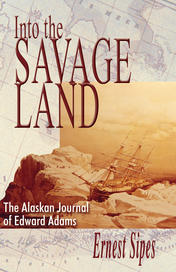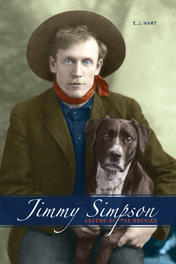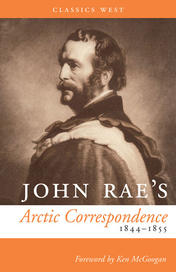Expeditions & Discoveries


Island of the Blue Foxes



From Chapter 7
Like a Glass of Stony White Wine
Dorothy Garrod
***
By the late 1920s, archaeology had evolved from a passionate (even personal) pursuit of the past to a purer science. The field had matured since Amelia Edwards boarded her dahabeeyeh and Gertrude Bell explored uncharted deserts alone. The lush travel narratives that described archaeological expedition as adventure were fading away. They became less popular, less useful to a science reaching for ever more precise answers. In the early twentieth century there was a new voice for archaeology, and it was Dorothy Garrod.
Take the following as an example. In the passage below Garrod offers a technical description of wind-borne sands that would have inspired Amelia’s pen to heady prose musing on those bits of ancient earth snatched by a swinging gale, bound in heavenly light. Garrod was a little more straightforward: The sands and travertines at Devil's Tower are clearly wind-borne. Apart from their contents the way in which layer 1 was driven up against the face of the rock and into the roof of the fissure demonstrates this beyond question.”
Here was the new tone of archaeologyconcise and clear, grounded in facts, leanly expressed. Objective. The older accounts of the field that melded travelogue and discovery in equal measure were laid to rest, relegated to literary artifact. They were appreciated to be sure (they were the written foundations of the field), but personal memoir no longer had a place in an archaeological survey report.
In the beginning archaeology served the personal taste of the researcher; it was a kind of intellectual pursuit sidesaddled to the exotic. Now archaeology was the thing served; served by scientists willing to leave out any mention of themselves. The spotlight shone exclusively on a site, the evidence found, and the conclusions drawn. Archaeology was suddenly selfless. People were still proud to put their names on reports, build reputable careers, and drum up recognition for their scholarly finesse, but the stories of individual experience and romance were relegated to the discipline’s backwaters. The goal had shifted from entertainment to information testing and building.
Archaeology had at last dug out its place as a credible international science. With so much evidence coming to light, ranging from buried towns like Gournia to ancient bones that revealed the intricacies of our human evolution, the questions archaeology could ask were becoming more pointed. The stakes were higher, the answers more complex yet increasingly within reach. A new generation of archaeologists set aside the once colorful tales of adventure and got down to a different kind of business.
***
One of these archaeologists was Dorothy Garrod. She tackled archaeology the way a physicist might break down the structure of a proton; she was thorough and methodical and had an eye fastened to detail. Her good friend, Gertrude Caton-Thompson (18881985), another notable early woman archaeologist, referred to a Garrod tradition of eminence in the advancement of scientific learning.” Garrod came from brainy stocka family of important scientists. Though a woman, she matched precedent and eventually won recognition as a towering figure” in archaeological history, one who exerted an enormous intellectual legacy.” Her lasting influence in the field was as deep as the sites she dug. Standing on the edge of an excavation unit in the Paleolithic cave site of Tabun in Palestine, Garrod gazed down at a cleared span of nearly 600,000 years of human history, a layer cake of history made of old hearth ash, tools, bones, and crumbled red ocher, all cascading beneath her boots in varying shades of soil.
Her quest was prehistoryhuman origins and the first seeds of agriculture, to be specificand she considered the revolutionary new discoveries of early man (yes, women too) throughout Europe and beyond the very life-blood of our science.” She seized the opportunities available in new dating methods (radiocarbon), constructed new and reliable chronologies, led complicated field excavations, found some of the earliest evidence for domestication of the dog, and became the first female professor at Cambridge University. She worked with leading men of the day as a highly respected colleague, if not a leader. Her training was toughone mentor made her place her hand in a bag, feel the stone tools, and identify them by touch aloneand she traveled far and wide to work in the cave sites where our ancestors once lit warm fires during a dark and cold Ice Age.
Like the women archaeologists who came before her, Garrod traveled to remote corners of the earth under harsh conditionsin some regions she couldn’t go anywhere without an armed escortyet this legendary woman remains a little opaque to the public eye. Highly reserved, she didn’t showcase her personal life or write a string of gushing letters home, and until recently, very few photographs of Garrod were known to exist. So little personal information was available that for years rumors claimed she had burned everythingnotebooks, pictures, letters, and sketches.
***
Dorothy was unique, rather like a glass of pale fine stony French white wine.” That was the way one colleague characterized her. Another gave a nod to her sound judgment,” explaining that Garrod was a good mixer, with a genuine interest in people, whatever their age, status, or diversified affairs. Her retentive memory, wide reading and interest outside her own subject, such as music (she played the violin and flute), fitted her to contribute something of interest, fun, or wit to most type of conversation.” But, if bored or displeased she could be devastatingly silent, sultry, abrupt, or unco-operative.”
Yet another portrait of Garrod gives us a woman both reserved, assured, delightful” in the field, and frightened, ill at ease” in hierarchical situations or when giving public lectures. Evidently, she was tricky to read and sensitive to circumstance.
An obituary written for her noted that partly through natural reticence, partly through social conventions of earlier life, she seldom alluded in general conversation, professional circles apart, to her own work and position, or to the international community of distinguished scientists in which, by inheritance and personal achievement she moved so easily.” She was quiet, modest, some said shy. By the list of her extensive publications, she was busy too.
Garrod was born on May 5, 1892. Her grandfather was knighted Sir Alfred Garrod. He was a professor at King’s College Hospital and was later endowed with the fancy title of Physician Extraordinary to Queen Victoria. He had three sons, two of whom became outstanding scientists and the third a poet. Garrod had a zoologist uncle, and her father, Sir Archibald Edward Garrod, was famous for pioneering a new field of medicine dealing with metabolic troubles. He was Regius Professor of Medicine at Oxford, a Fellow of the Royal Society, and honorary member of countless medical institutions clubs and organizations at home and abroad. The Garrod household kindled the scientific spirit, which, in the words of Dorothy Garrod’s famous father, acts as a check as well as a stimulus, a spirit restraining too eager flights of the imagination and too hasty conclusions.” This spirit of restraint deeply influenced Garrod’s approach to archaeology.
By the grace of so many clever minds in the family, the Garrods enjoyed social prestige and upper class wealth and comfort. Although little information exists about Garrod’s mother, Laura Elizabeth Smith, it is known that she had a scientific upbringing also. Her father was a surgeon famed for the dexterity of his hands. That attribute was passed onto Garrod, holding her in good stead when she would one day gently lift fragile human bones out of clingy clay-rich earth.





